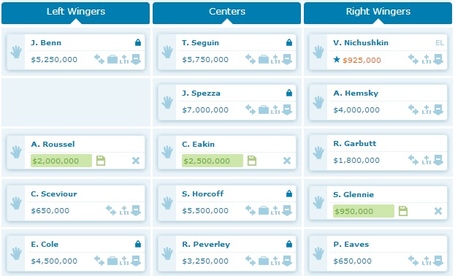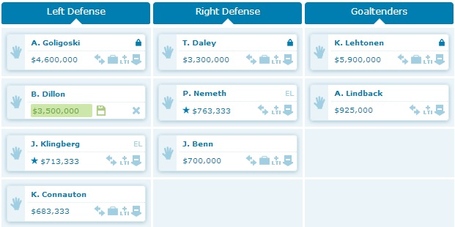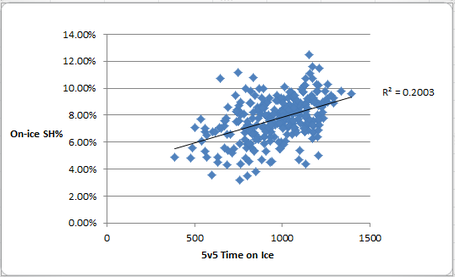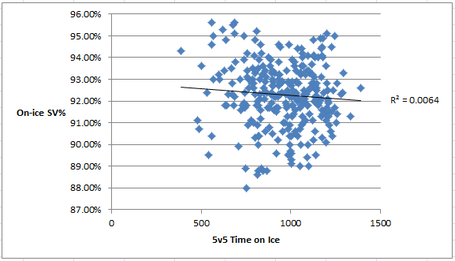![]()
One of my close associates, Dwight King who will remain unnamed, gained access to the Kings' player discussions over the last several years and shared it with me. Let's take a look!
Recently you may have read that the Houston Astros had their internal trade discussions leaked to an anonymous hacker. Well, I have good news everyone! I was able to gain access to the internal discussions of our very own Los Angeles Kings. Boy, this stuff is really valuable insight into the inner-workings of a finely-tuned hockey machine.
One of the first things Dean Lombardi did as GM of the Kings was direct the 2006 NHL entry draft. Below we have an exchange between then director of amateur scouting Al Murray and his new boss about this critical moment in the team's history:
APR 30, 2006
DL: Alright Al, gimme the rundown here. This is a big moment for our franchise. I've just been given what seems like an insurmountable task. I have to clean up the complete disaster left behind by Dave Taylor and all I've got is, fuckin, Mike Cammalleri and some Slovakian center guy. This is crap. We need to fix this. Do we know any offensive talents that will be available with our first pick?
AM: Well, actually, my suggestion is gonna not be offense at all. I think this usually goes pretty well, historically speaking, so let's take a goalie first, okay? I'm a big believe in Jonathan Bernier. He's great. As for our second pick, okay, a forward would be good. I agree. Our cupboards are pretty bare, though I think this Petr Kanko guy is really good. He had like 60 points this year. THat's pretty good. Anyway, I'm a huge beleiver in Trevor Lewis. Not one forward in the draft has hands like him.
DL: What about Claude Giroux? My old team, the Flyers, seemed to really like him. TSN has him ranked behind Lewis but he seems excellent.
AM: No. Hands of stone. Pass on him. Trevor Lewis is your guy. This guy's gonna pile up points in the NHL.
Petr Kanko had 27 points that year. Claude Giroux was taken five picks after Trevor Lewis. Al Murray was fired the following January.
Things didn't get interesting for the Kings until 2008. This was the year they drafted a pair of defenders in the first round. Below I'll attach a conversation between Lombardi, new director of amateur scouting Michael Futa, and new assistant GM Ron Hextall.
JUN 12, 2008
DL: Alright. Here we are again. We have the second pick in the draft. This is a huge moment for us. We need an impact player. Pretty clear Steven Stamkos is going first, and it looks like a bunch of defensemen are the next most talented players. What are we looking at?
RH: 3 words. COLTON TUBERT. TAKE. THAT GUY.
DL: Really? He has like 5 points in his junior career
RH: COLTON
MF: no
RH: TUBERT
DL: Are you even spelling that right? It feels wrong
RH: TUBERT!!!!!!!!!!!!!!!
DL: okay shut up fine jesus christ we'll take him with our second pick
MF: Okay then. Anyway. I really like Drew Doughty. I think he's our guy. He loves the Kings, he's super talented, amazing instincts on the ice.
RH: i like my ASS hahahaha
DL: Alright. Doughty and Teubert.
A productive conversation.
The 2009/10 season was boring too. Not on the ice -- the team was fun there. Off the ice. Boring. No cool trades. Freddy Modin, are you joking? What the hell. The best quote about that deadline was from Ron Hextall: "i think jeff haplern puts us over the top. get him. were golden." Good call Ron. You were so close.
The 2010 draft was also boring. Michael Futa advocated for Derek Forbort, whom Lombardi ended up selecting. Surprisingly, Ron Hextall was all about Vladimir Tarasenko. Though it's possible that he just liked saying the name Vladimir Tarasenko, as these emails are just littered with him spelling out that name and talking about how fun it is to say.
After an unfortunate end to the 2011 season, in which the Kings were inexplicably incapable of erasing a 3-1 series deficit against the Sharks, things got interesting. Dean Lombardi and Paul Holmgren had the following exchange heading toward summer:
May 27th, 2011 from thearchitect@lakings.com:
Hey Paul, this is your old friend Dean. How you been?! Long time no talk. Anyway, hey listen... I just was thinking about how it really seems like Mike Richards is holding your team back. Get back to me soon? Thanks!
June 2nd, 2011 from holmboy69@flyera.com:
Fuck you.
June 3rd, 2011 from holmboy69@flyera.com:
Sorry that was for Ed Snider
June 4th, 2011 from holmboy69@flyera.com:
Fuck what were you talkign about. Oh. Yeah. I agree. Gimme. Uh. A young player and. A young player I think. Yeah. DO that. Two young players. WHo you got/
June 19th 2011 from thearchitect@lakings.com
[REDACTED: 50 page explanation for why this is a great deal] How do Schenn and Simmonds sound to you?
After a rough go of things to start the 2011/12 season, Dean Lombardi was forced to fire then head coach Terry Murray.
DEC 21, 2011
DL: Alright Terry. You're a great man. I hate to do this to you. Especially - for some reason - over IM, but you're fired.
TM: Okay.
DL: That... That's it?
This may surprise you, but I have no record of computer interaction between Darryl Sutter and Dean Lombardi. Lombardi mentioned something about carrier pigeons and smoke signals in an exchange with special assistant Jack Ferreira, but we'll leave that be.
A few months after firing Murray, the Kings were still searching for offense, so Lombardi and Hextall reached out to Columbus general manager Scott Howson.
FEB 22, 2012
DL: Hey Scott, you around?
SH: Hell yeah. Lets do some fucking TRADES
RH: YEAH!!!!!!!
DL: Uh. Okay. We really need some goal-scoring.
SH: hang on. i have just the guy. you're gonna loaeve him. JEFF CARTER
DL: Yeah. That's what we were gonna suggest.
SH: we really need some fucking DEFENSE. somehow JAMES GODDAMN WISNINSKI DIDNT SAVE OUR ASSES. FUCK.
DL: Well we have some defensive depth
SH: I want Jack Johnson. NOW.
[Dean Lombardi and Ron Hextall enter a private conversation]
DL: IS HE SERIOUS?
RH: lmao i dont even know whats happening. i didnt know we could trade singers or albums or whatever. whose jeff carter? is his old stuff good?
[private conversation ends]
DL: Okay. Jack Johnson and a 1st sound good?
SH: HAHAHAHA SUCKER!
Somehow Scott Howson stuck around for almost a full year after this trade.
The Kings went on to win the cup, and were poised for another deep run in 2013. However, the front office felt as if they needed another defenseman to put them over the top:
MAR 28, 2013
DL: Okay Ron, we really need another defenseman here. Who ya got?
RH: DERIAN HATCHER
DL: I think he might be dead.
RH: SHIT
DL: Hang on, lemme get my binoculars and see if Darryl has any input
[Dean looks down at Darryl on the bench, who heads over to the boards and breathes on the glass. He then draws "Robyn Regehr" into his breath]
DL: Any thoughts on Robyn Regehr, Ron?
RH:
RH:
RH:
[Ron Hextall left to go play with his hot wheels]
The Kings wound up trading two second-round picks for Robyn Regehr, a nearly catastrophic move. This was the last time the Kings relied on Darryl Sutter or Ron Hextall for their input. Hextall left for Philadelphia shortly after the end of the Kings' 2013 season. A few days later, Rob Blake was named to be Hextall's replacement. After a quiet off-season, the Kings once again found themselves in search of offense heading into the 2014 trade deadline. In a Rust Cohle, "time is a flat circle" moment, they turned to Columbus again:
MAR 5, 2014
DL: Hey Jarmo, you've done a great job making the Blue Jackets into a legitimate threat. I think we can piece together a mutually beneficial deal here.
JK: LETS DO SOME FUCKING TRADES!!!!!!!!!
DL: We really need some offense and Marian Gaborik is a free agent to be, is there a fit here?
JK: Lmao...Marian? Marian Gaborik? YOU WANT MARIAN GABORIK? Well you're gonna pay a STEEP PRICE FOR HIM, I tell you that much. Jeez. Who do you think I am, Scott Howson? I am definitely not Scott Howson, I tell you that much. Jeez. GEEZ.
DL: Fair enough, fair enough. We're willing to part with a few pieces, I think. We have some good young forwards.
[Dean Lombardi enters "Jarmo Kekalainen" into Google and finds out that it translates to "Scott Howson" in Finnish]
DL: Especially Matt Frattin.
J"SH"K: FUCK YEAH!!!!!!!!!! HOSED YOU AGAIN ASSHOLE!!!
Well there you have it. That's how the magic happens.





























